To maximize your solar water heater's performance, start by ensuring ideal collector placement for maximum sunlight exposure. Regularly clean and maintain your system, including inspecting for leaks and flushing the storage tank annually. Properly insulate all pipes and the storage tank to minimize heat loss. Adjust your water usage habits by scheduling hot water use during peak sunlight hours and installing low-flow fixtures. Finally, monitor your system's performance regularly by tracking energy bills and checking for any unusual changes. These simple steps can greatly boost your heater's efficiency and save you money. Dive deeper to reveal even more ways to enhance your solar water heater's effectiveness.
Optimal Collector Placement
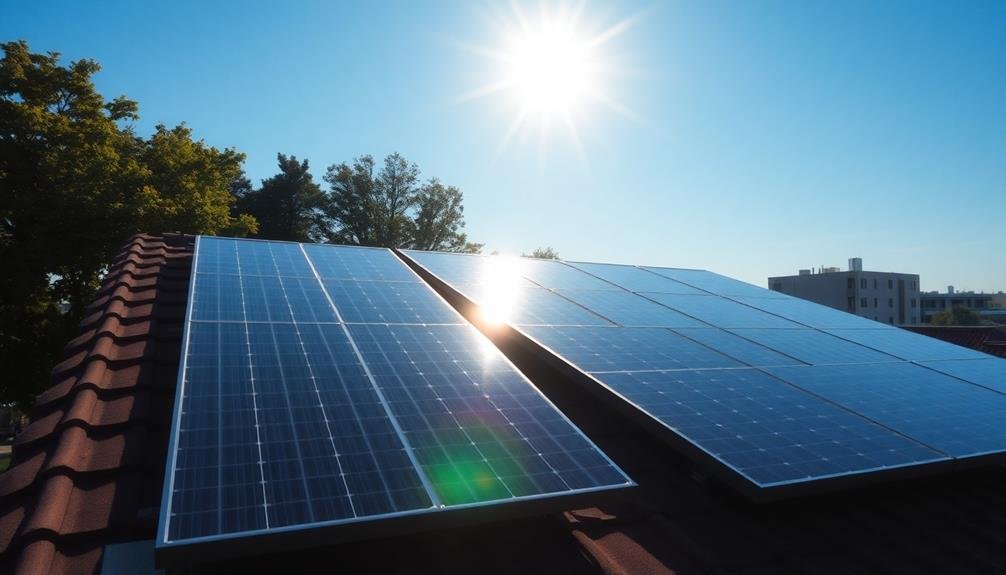
The placement of your solar collector is essential for maximizing your water heater's efficiency. To achieve ideal performance, you'll want to position your collector to receive maximum sunlight exposure throughout the day. Ideally, install it on a south-facing roof or wall in the Northern Hemisphere, or north-facing in the Southern Hemisphere.
The angle of your collector should be equal to your latitude plus 15 degrees for year-round use, or your latitude minus 15 degrees for summer-focused heating.
Ensure there's no shading from nearby trees, buildings, or other structures that could obstruct sunlight. Even partial shading can considerably reduce your system's efficiency. If roof mounting isn't possible, consider ground-mounted options or specialized frames to achieve the correct orientation and angle.
Keep in mind that local climate conditions may affect placement. In areas with frequent overcast weather, a slightly steeper angle can help capture more light during winter months.
Additionally, consider ease of access for maintenance when selecting your collector's location. By optimizing placement, you'll maximize your solar water heater's performance and energy savings.
Regular Maintenance and Cleaning
Three key maintenance tasks will keep your solar water heater running effectively. First, regularly inspect the system for leaks, damage, or loose connections.
Second, clean the collector surface to remove dirt, dust, and debris that can reduce efficiency.
Third, flush the storage tank annually to remove sediment buildup.
To maintain peak performance, follow these steps:
- Check the glycol levels in closed-loop systems annually and top up if necessary.
- Test the pressure relief valve every six months to verify proper function.
- Verify that insulation on pipes and tanks is intact and replace if damaged.
- Monitor system performance and energy savings to detect any issues early.
You'll need to clean the collector surface at least twice a year, more frequently in dusty areas. Use a soft brush and mild soap solution, avoiding abrasive materials that could scratch the glass.
Don't forget to trim nearby vegetation that may cast shadows on the collectors.
If you're not comfortable performing these tasks yourself, consider hiring a professional for annual maintenance. They can also check the system's controls, pumps, and other components to verify everything's working correctly.
Regular maintenance will extend your solar water heater's lifespan and maintain its efficiency.
Insulate Pipes and Tank
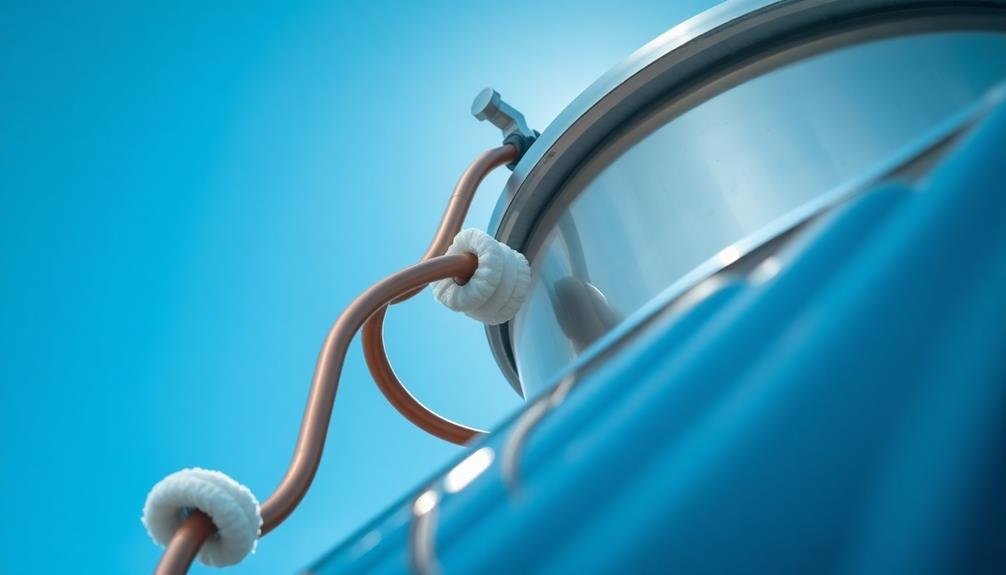
Insulating your solar water heater's pipes and tank is essential for maximizing system efficiency and reducing heat loss. Start by identifying all exposed pipes, including those running from the collectors to the storage tank and from the tank to your faucets.
Use high-quality pipe insulation sleeves, guaranteeing they fit snugly around the pipes. Pay special attention to outdoor pipes, which are more susceptible to temperature fluctuations.
For the storage tank, invest in a well-fitted insulation blanket designed for water heaters. Make sure it doesn't cover the thermostat or burner area if you have a backup heating element.
Secure the blanket with tape or straps, making certain there are no gaps.
Don't forget to insulate valves and fittings, as these can be significant sources of heat loss. Use foam tape or specialized insulation products for these areas.
If you're not comfortable doing this yourself, hire a professional to guarantee proper installation.
Adjust Water Usage Habits
Adjusting your water usage habits can greatly boost your solar water heater's efficiency and reduce energy costs. By making simple changes to when and how you use hot water, you'll maximize your system's performance and minimize reliance on backup heating methods.
First, try to align your hot water usage with peak sunlight hours. This means scheduling showers, laundry, and dishwashing during midday or early afternoon when your solar collector is receiving the most sunlight. You'll benefit from the hottest water and reduce the need for backup heating.
Additionally, consider these water-saving tips to optimize your solar water heater:
- Install low-flow showerheads and faucet aerators to reduce hot water consumption.
- Fix any leaky faucets promptly to prevent wasting heated water.
- Use cold water for tasks that don't require hot water, like rinsing dishes or washing clothes.
- Take shorter showers and avoid filling bathtubs to conserve hot water.
Monitor System Performance
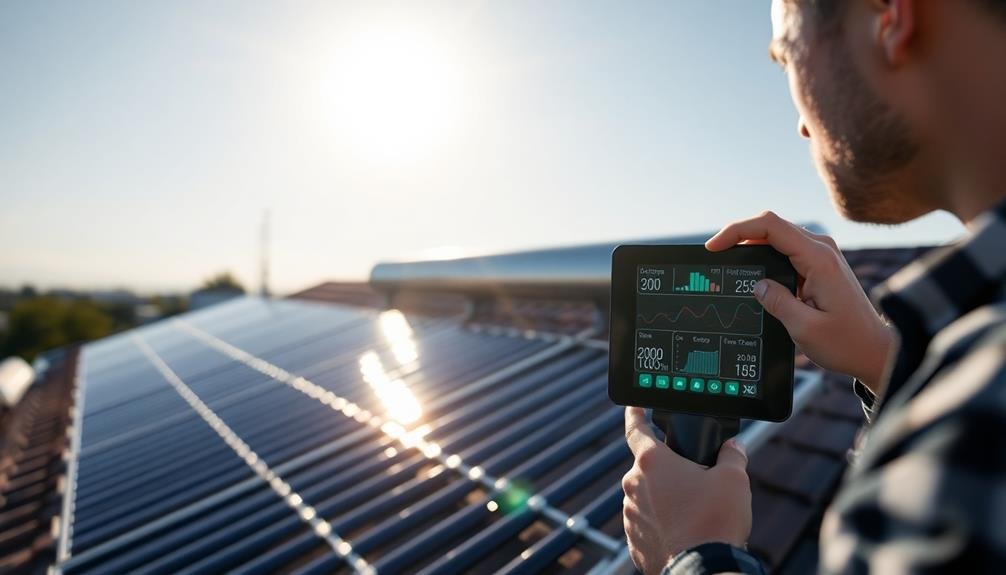
Regular monitoring of your solar water heater's performance is key to maintaining its efficiency and longevity. Keep an eye on your energy bills and hot water output to detect any unusual changes. Install a monitoring system that tracks solar energy collection, water temperature, and overall system efficiency. This data will help you identify potential issues early on.
Check your system's pressure gauge regularly to verify it's within the recommended range. Inspect visible components for signs of wear, leaks, or damage. Pay attention to unusual noises or vibrations, as they may indicate problems with the pump or other parts.
Use this simple checklist to track your system's performance:
| Weekly Checks | Monthly Checks |
|---|---|
| Pressure gauge | Collector cleanliness |
| Hot water output | Pipe insulation |
| Energy consumption | Valve operation |
| System sounds | Sensor accuracy |
If you notice any significant changes in performance or encounter issues you can't resolve, don't hesitate to contact a professional. Regular maintenance by a qualified technician, typically once a year, can help prevent major problems and verify your solar water heater continues to operate at peak efficiency.
Frequently Asked Questions
How Long Does a Solar Water Heater Typically Last?
You can expect your solar water heater to last 15-20 years with proper maintenance. It's a durable investment that'll serve you well. Regular check-ups and timely repairs can even extend its lifespan beyond two decades.
Can Solar Water Heaters Work Effectively in Cold Climates?
Yes, solar water heaters can work effectively in cold climates. You'll need a system designed for freezing temperatures, like a closed-loop glycol system. It'll still collect heat on sunny days, even when it's cold outside.
What's the Average Cost Savings Compared to Traditional Water Heating Methods?
You'll typically save 50-80% on your water heating costs with a solar water heater. Your exact savings depend on your location, energy prices, and system efficiency. Over time, you're likely to recoup your initial investment.
Are There Government Incentives or Rebates for Installing Solar Water Heaters?
Yes, you'll often find government incentives for solar water heaters. Check your local and federal programs for tax credits, rebates, and grants. They can greatly reduce your installation costs and make the switch more affordable for you.
Can I Integrate a Solar Water Heater With My Existing Heating System?
Yes, you can integrate a solar water heater with your existing system. It's often done through a pre-heating setup, where solar-heated water feeds into your conventional heater. This reduces your reliance on traditional energy sources and lowers bills.
In Summary
You've now got the tools to get the most from your solar water heater. By placing collectors wisely, keeping up with maintenance, insulating properly, adjusting your habits, and monitoring performance, you'll maximize efficiency and savings. Remember, it's an investment in sustainable living. Stay proactive, and you'll enjoy hot water powered by the sun for years to come. Keep these tips in mind, and you'll be well on your way to ideal solar water heating.

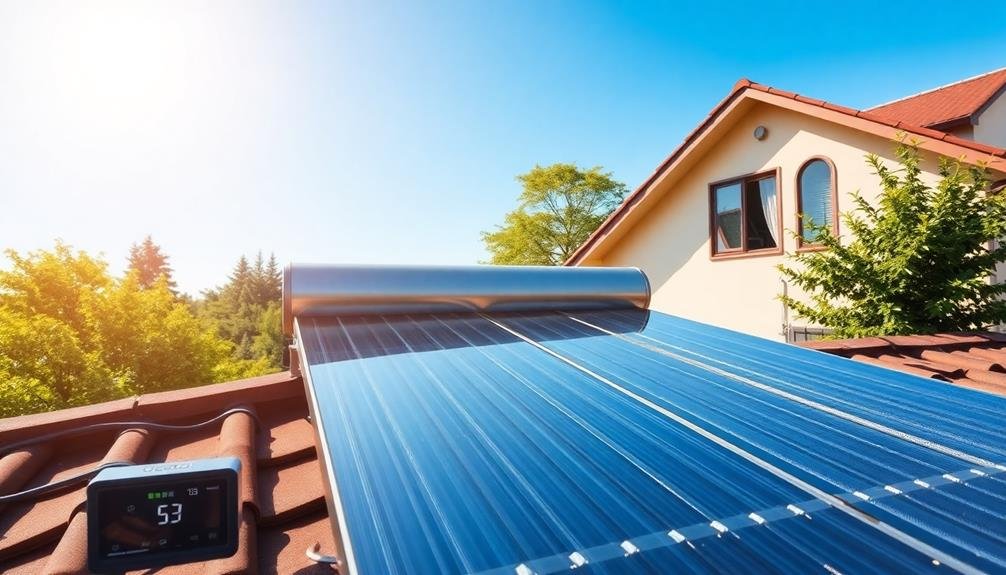
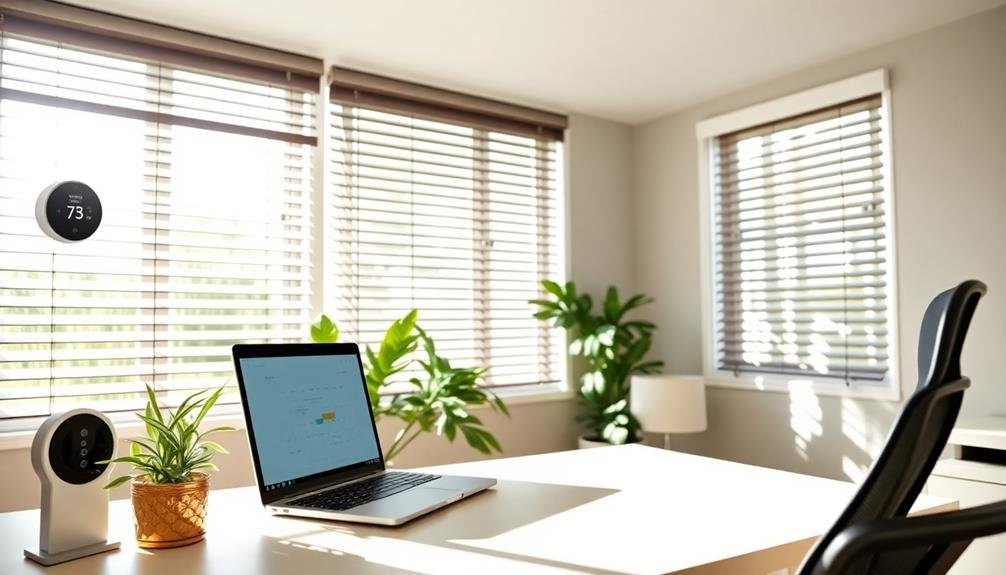
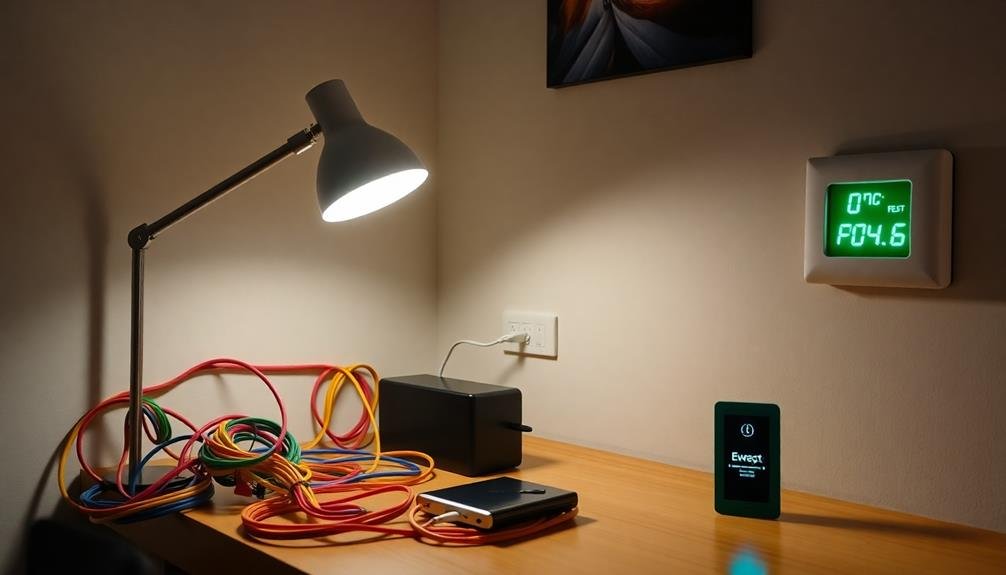
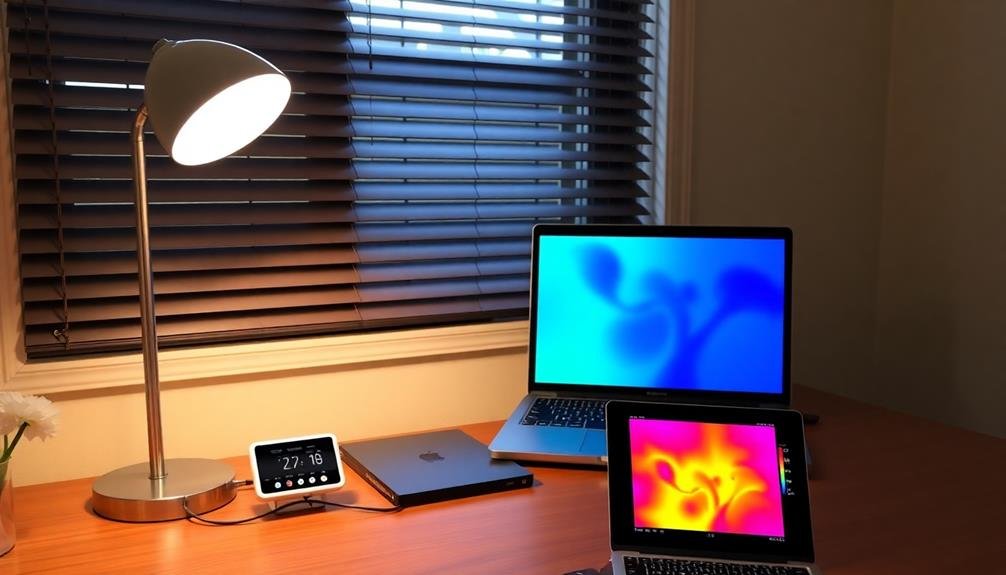
Leave a Reply